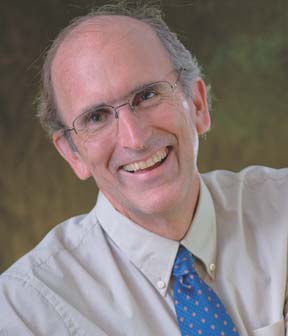 |
 |
| current issue |  |
past issues |  |
send a letter/news |  |
address update |  |
advertise |  |
about us |  |
alumni home |
Features
Repeat After MePage 2 of 5
They also challenged the prevailing belief that people's lives were consistent and predictable. Instead, they hypothesized that memories of specific events or conversations could influence the direction of a person's life. The fact that some memories might not be accurate did not discourage them much. The thinking was that we become the stories we tell about ourselves. As they focused on the development and functions of episodic memory, these psychologists asserted that whether or not stories are accurate, they are important. Just how important is still being explored.
LIGHT UP YOUR BRAIN
At the same time the field of personal-event memory was finding its footing, a new technology, neuroimaging, was giving scientists an inside view of how memories are stored. Before the 1980s, the only insights into the memories of a working human brain had been extrapolated haphazardly from the results of accidents, brain surgery or autopsies. "We can now study brain function in ways that once were thought to be impossible," notes Robert Mair, a UNH psychology professor who specializes in neuroscience.
When nerve cells in the brain are active, they consume oxygen; the more active they are, the more oxygen they need. Using functional magnetic resonance imaging (fMRI) and other neuroimaging tools, researchers can see that different parts of the brain "light up"— or have the most increase in blood flow—when different memory-related mental tasks are performed.
Once it was thought that there was one unified memory system in the brain for all memories. It's now becoming clear that—as cognitive psychologists have been arguing—there are many kinds of memory and the system is highly complex. "Cognitive psychology helped differentiate types of memory, and now, with the development of better scanning methods, we're able to see that the different types depend on different parts of the medial temporal lobe," Mair says.
Emotional memory, for instance, engages the amygdala. Autobiographical events are stored and recalled in the hippocampus. Examples of other specialized sites are those involved with familiarity versus novelty ("I know I've been here before"), and memories of smells, music, faces and proper names. One part of the hippocampus appears to be designated for spatial memory—the memory of a physical space. More elaborate spatial memory, in the form of cells organized as triangular grids, was reported just this year to be adjacent to the hippocampus.
 "We can now study brain
function in ways that were thought to be impossible."
"We can now study brain
function in ways that were thought to be impossible."
—Robert Mair, professor of psychology |
On a brain map, cautions Mair, there are no double yellow lines marking the boundaries of memory activity. "The whole brain works together for almost everything," he notes. Neuroimaging gives a picture of relative differences in brain activity, and the interactions are still being unraveled.
However, Mair notes, it's fairly clear that not all memories reach the medial temporal lobe. Every minute of the day is full of memories that don't last—the sound of a door opening, the color of a tree you see out the window, the feel of the floor under your feet when you get out of bed in the morning. Based on imaging studies, these short-term memories don't appear to go much farther than the sensory areas of the brain's cortex. They register, but aren't consolidated into long-term memory.
A typical person can usually hold about seven facts at a time in short-term memory, studies show. These short-term memories may last 20 to 30 seconds, and then, unless rehearsed with conscious thought, decay. There's also working memory, the kind of memory that lets you store information briefly while thinking about it. It's the kind of memory that, for instance, allows you to stay with a joke long enough to get the punch line. In the 1988 movie "A Fish Called Wanda," Kevin Kline played a hit man who always asked, right after being given instructions, "What's the second thing?" Clearly, a problem with working memory.
Memories destined to be "keepers" arrive in the cortex and, after encoding, are sent off to the hippocampus and other parts of the brain, where they are processed for long-term storage. Long-term memory falls into two major categories, memories that are context-based—fixed in time and place—and those that are not. Knowing the date of your birth, that the Earth is round, the ocean is salty and George Washington was the first president are examples of non-contextual, "just-the-facts-ma'am," memory. Context-based memory, on the other hand, is episodic and includes autobiographical-event memory. It's the kind that interests Pillemer and his colleague Michelle Leichtman, associate professor of psychology, who holds the Lamberton Professorship.
Page: < Prev 1 2 3 4 5 Next >Easy to print version

